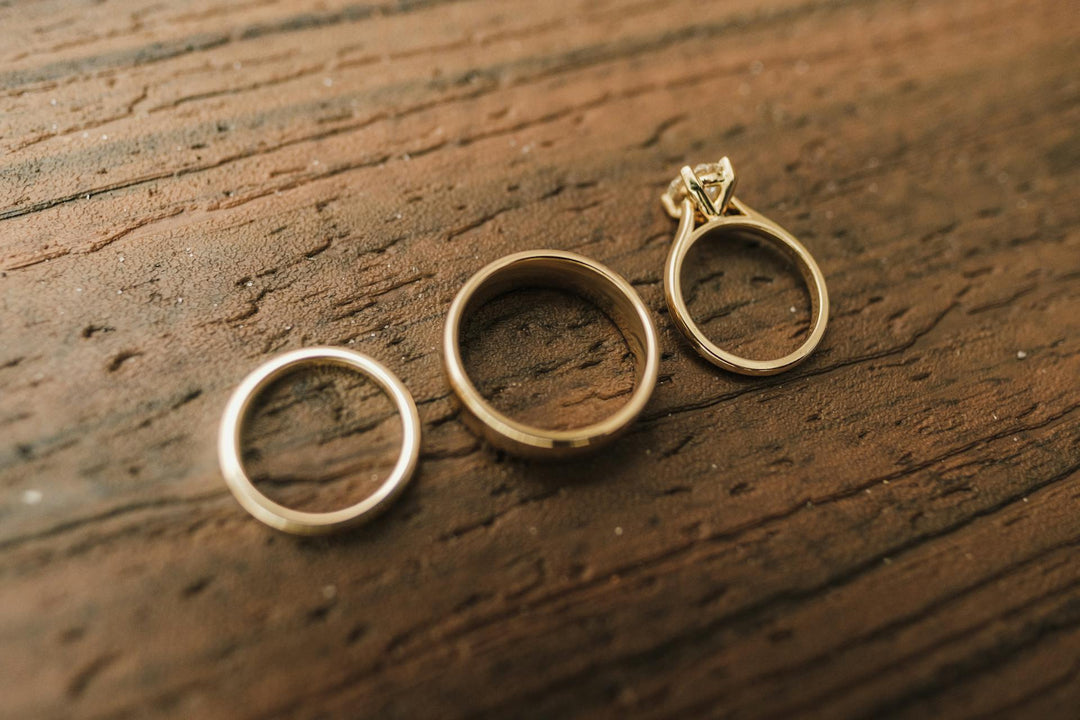1. Introduction
The diamond industry is worth billions of dollars and diamonds have been seen as a symbol of wealth and power for centuries. However, the traditional diamond industry has come under scrutiny in recent years for its environmental impact and unethical practices.
Enter lab grown diamonds. These diamonds are created in a laboratory setting and have the same physical and chemical properties as diamonds that are mined from the earth. Lab grown diamonds are a more sustainable and ethical option, and they are also more affordable.
If you are considering buying a diamond, it is important to do your research to make sure you are getting the best value for your money. In this blog post, we will tell you everything you need to know about lab grown diamonds, including their benefits, drawbacks, and cost.

2. What are lab-grown diamonds?
Lab grown diamonds are chemical, optical and physical identical to natural diamonds. They are created using a process called chemical vapor deposition (CVD). In this process, a diamond seed is placed in a vacuum chamber and exposed to a mixture of gases, such as methane, hydrogen and carbon dioxide. The chemical reaction results in the formation of a diamond lattice, which is the same crystal structure as the diamond mined from the earth.
The cost of lab grown diamonds is typically lower than natural diamonds due to their relatively simple production. Also, since they are not mined, there is no environmental impact associated with their production.
Lab grown diamonds differ from natural diamonds in one major way; they are not graded by the Gemological Institute of America (GIA). Instead, a lab grown diamond is graded according to their characteristics, including the shape, size, color and clarity.
Lab grown diamonds are becoming increasingly popular and are a great choice for those looking for an ethical and sustainable alternative to natural diamonds.

3. Why are lab-grown diamonds becoming more popular?
Lab-Grown diamonds are becoming increasingly popular due to their ethical and sustainable nature, as well as their superior quality and lower cost compared to natural diamonds. They offer an unparalleled value to the consumer.
Lab-grown diamonds are produced in laboratories that aim to replicate the conditions under which natural diamonds are produced. The production process takes only a few weeks and is completely free of any human intervention. As a result, Lab-Grown diamonds are guaranteed to be conflict-free, high-quality and free of any impurities.
Additionally, Lab-Grown diamonds come in a range of sizes, from large stones to small accents, making them perfect for any type of jewelry. Consumers who are looking for a cost-effective way to buy diamonds can opt for lab-grown diamonds.
The industry of Lab-Grown diamonds is growing exponentially and the demand for the diamonds is ever-increasing. Consumers and retailers alike understand that lab-grown diamonds provide an ethically responsible, cost-effective alternative to traditional diamonds.

4. How are lab-grown diamonds made?
Lab-Grown diamonds are created in a controlled setting and are composed of pure carbon. The process of creating Lab-Grown diamonds is known as Chemical Vapor Deposition (CVD). In this process, a small diamond seed is placed within a vacuum chamber and pure carbon is vaporized until it covers the diamond seed and slowly grows it into a full-sized diamond. Once the diamond is grown, it is cut and polished according to the customer’s specifications.
CVD diamonds are ethically grown in a lab environment without the need for any human intervention, thus ensuring that there are zero conflicts involved in their production. The process of creating Lab-Grown diamonds is much faster compared to the formation of natural diamonds, taking weeks only as compared to the millions of years it takes for natural diamonds to form.
In addition to being ethically produced, Lab-Grown diamonds are also more affordable than natural diamonds, making them more accessible to the general public. It is important to note that Lab-Grown diamonds are real diamonds and are certified by the Gemological Institute of America (GIA).

5. Are lab-grown diamonds ethically-sourced?
Yes, Lab-Grown diamonds are ethically sourced and no human rights are compromised in any way during the production process. As mentioned previously, Lab-Grown diamonds are made in a lab environment using high levels of precision and accuracy, so no human intervention is needed. The process also does not use any toxic chemicals or require any extra energy to be produced. Furthermore, since no large-scale mining is involved, no damage or disruption to the environment is caused.
Lab-Grown diamonds are also traceable and can be tracked from the mine where the diamond is grown to its final destination. This allows customers to track their diamonds and be sure that their diamonds have been ethically sourced. Ultimately, Lab-Grown diamonds are a great choice for customers who are looking for an ethical and environmental-friendly solution to buying diamonds.

6. What are the benefits of buying a lab-grown diamond?
When it comes to buying Lab-Grown diamonds, there are plenty of benefits to enjoy. Here are just some of the reasons why Lab-Grown diamonds are so popular:
1. Cost – Lab-Grown diamonds are much more affordable than mined diamonds, meaning you can get a bigger and better diamond within your budget.
2. Quality – Lab-Grown diamonds are of the same quality and have the same chemical properties as mined diamonds. This means you can buy a lab-grown diamond and have the peace of mind that it is of the same quality as a mined diamond.
3. Traceability – Lab-Grown diamonds are traceable from the labwhere it was grown to its final destination, so you can be sure your diamond is ethically sourced and comes with a detailed history of its origin.
4. The Environment – Lab-Grown diamonds are created without chemical by-products and does not harm the environment in any way, making it an eco-friendly choice for those who are looking for sustainable options.
In addition, Lab-Grown diamonds are delivered faster, which means customers can enjoy the process much quicker. Ultimately, the benefits of buying a Lab-Grown diamond are numerous and can save you money, time, and peace of mind.

7. Are there any drawbacks to buying a lab-grown diamond?
Yes, there are drawbacks to buying lab-grown diamonds. It is important to understand these drawbacks so that buyers can make an informed decision about the diamond they purchase.
The most significant issue is the resale value of lab-grown diamonds. Mined diamonds retain more value than lab-grown diamonds and thus, it is more difficult to sell a lab-grown diamond on the market. It is not impossible, but buyers should keep this in mind when making their purchase.
Also, while lab-grown diamonds are created with the same chemical properties as mined diamonds, the authenticity of a lab-grown diamond can be difficult to prove. This is because lab-grown diamonds have no certification like mined diamonds have, and buyers have to rely on the credibility of their diamond retailers when purchasing.
Finally, while diamonds are no longer strictly owned by the wealthy, lab-grown diamonds are still a more expensive purchase and can be unaffordable for some.
Despite all of these drawbacks, it is important to keep in mind that lab-grown diamonds still offer many advantages and can be a worthwhile investment for those who are able to afford them.

8. How can you tell if a diamond is lab-grown?
Fortunately, lab-grown diamonds can be identified according to a few key characteristics. One of the easiest ways to tell if a diamond is lab-grown is through a simple microscope image test. Lab-grown diamonds will have a slightly different character than mined diamonds. While mined diamonds have inclusions that look like tiny dots or moons, lab-grown diamonds will have inclusions that look like hexagons or other shapes.
Another way to tell the difference between lab-grown diamonds and mined diamonds is in the absorption spectra. Mined diamonds absorb certain spectrum bands and lab-grown diamonds absorb different ones.
Finally, lab-grown diamonds also have fluorescence which is not typically seen in mined diamonds. This means when a lab-grown diamond is exposed to UV light, it will display a natural fluorescent glow.
These characteristics make it possible to distinguish between lab-grown and mined diamonds. Although the differences are small and require a trained eye to recognize, once you know the subtleties, it is not difficult to tell the difference.

9. Where can you buy lab-grown diamonds?
Lab grown diamonds are becoming increasingly popular as an ethically and environmentally responsible alternative to mined diamonds. They are generally more affordable than mined diamonds, as well as being available in larger sizes, higher carats and higher clarity.
Thanks to their growing appeal, lab grown diamonds are now widely available both online and in brick and mortar stores. Major jewellery retailers such as Tiffany & Co., Helzberg, and Blue Nile all carry lab grown diamonds.
If a brick and mortar store is not available in your area, there are a variety of online retailers that offer lab grown diamonds. Websites such as Union Diamond, Pure Grown Diamonds, and Brilliant Earth are all reputable online sources of lab grown diamonds.
Lab grown diamonds provide an ethical and cost effective alternative to mined diamonds. With their growing availability, buying lab grown diamonds could not be any easier.






